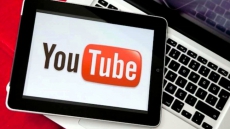LinkedIn, when used professionally and appropriately is an outstanding medium to create, exchange and amplify value.
LinkedIn is a platform for connecting with new people, building relationships, exchanging value, learning, and growing together. Sales and business can also be a byproduct of these relationships, but things get toxic when only pitching becomes the primary intent.
LinkedIn, when used professionally and appropriately is an outstanding medium to create, exchange and amplify value. The deeper your network, more the value potential but one must use the network effect and social capital effectively and judiciously. Given the advent of smart spam filters, AI based mail filtering etc., it has become harder for email driven sales reps and most people do not answer calls from numbers they do not recognize. This has created an aggressive new push towards pitching on LinkedIn.
What is the “Connect and Pitch” Tactic
It is not the primary intent of professionals who join LinkedIn to get pitched something, nor do they expect people to pitch something as soon as the connection is established.
In recent times, we have an increase in the “connect and pitch” tactic (COVID-19 is one driver) – these pitches have disengaged many genuine and interesting people from connecting with new people.
The “connect and pitch” artists are doing this in the name of social selling and many of these people would have had at least one interest through their outreach. The act itself conveys lack of understanding around social selling which really means connecting and building relationships rather than hard selling. People forget that the cost of that one success comes at a cost of alienating thousands of people, tarnishing their own and the company’s brand on social media.
Now, do not get me wrong - I am one of the biggest fans on LinkedIn. Personally, I am someone who has embraced and harnessed the platform and have driven over $10m in sales over several years owing to strength, breadth and depth of relationships built on this platform and this is why I personally loath the connect and pitch style. The messages in your inbox are also more intrusive (and time consuming) than banners, pop-ups, ads, bots and other distracting methods of online selling and attention seeking. There are other ways of engaging your network through thought leadership, content sharing, engagement in groups and virtual events – these methods are less intrusive, more engaging, provide value and demonstrate your expertise with a higher likelihood of converting sales.
Perception vs Reality of The “Connect and Pitch”
Contrary to their own belief, here is how perception and reality works on people:
√ It is the robocall equivalent on social media and most people get put off by spam
√ An intent signaling a genuine interest but an action with a straight pitch is immediate breach of trust
√ An unsolicited and untargeted pitch indicates lack of understanding around the evolution of sales as a discipline
√ A “connect and pitch” approach makes the product or service look like a commodity otherwise lacking traction
√ Without genuine intent to connect, know and understand the needs of an individual, the whole interaction is shallow and will not yield results
√ LinkedIn has built a brand, reputation, scale and promise on being a stellar platform to connect professionals and exchange value. When people deviate from this intent with the “connect and pitch” act, it comes across as a violation
√ If you cannot provide value, there is limited value in a shallow pitch Social capital is the new currency of business and one should not expend it without good reason, be honest, build genuine relationships, authentic connections and business will follow. There are no short cuts to sales without risking your personal brand.

ABOUT THE AUTHOR
Nitin Kumar is a two-decade veteran in the Hi-Tech industry. He is currently the CEO of Appnomic but played a variety of hands on executive roles ranging from CEO, Chief Growth Officer, Chief Transformation Officer, M&A Integration/Separation Leader, BU Head and Management Consulting Partner (corporate and PE portfolio companies). He is considered a business builder, thought leader and pioneer of many innovative approaches.







